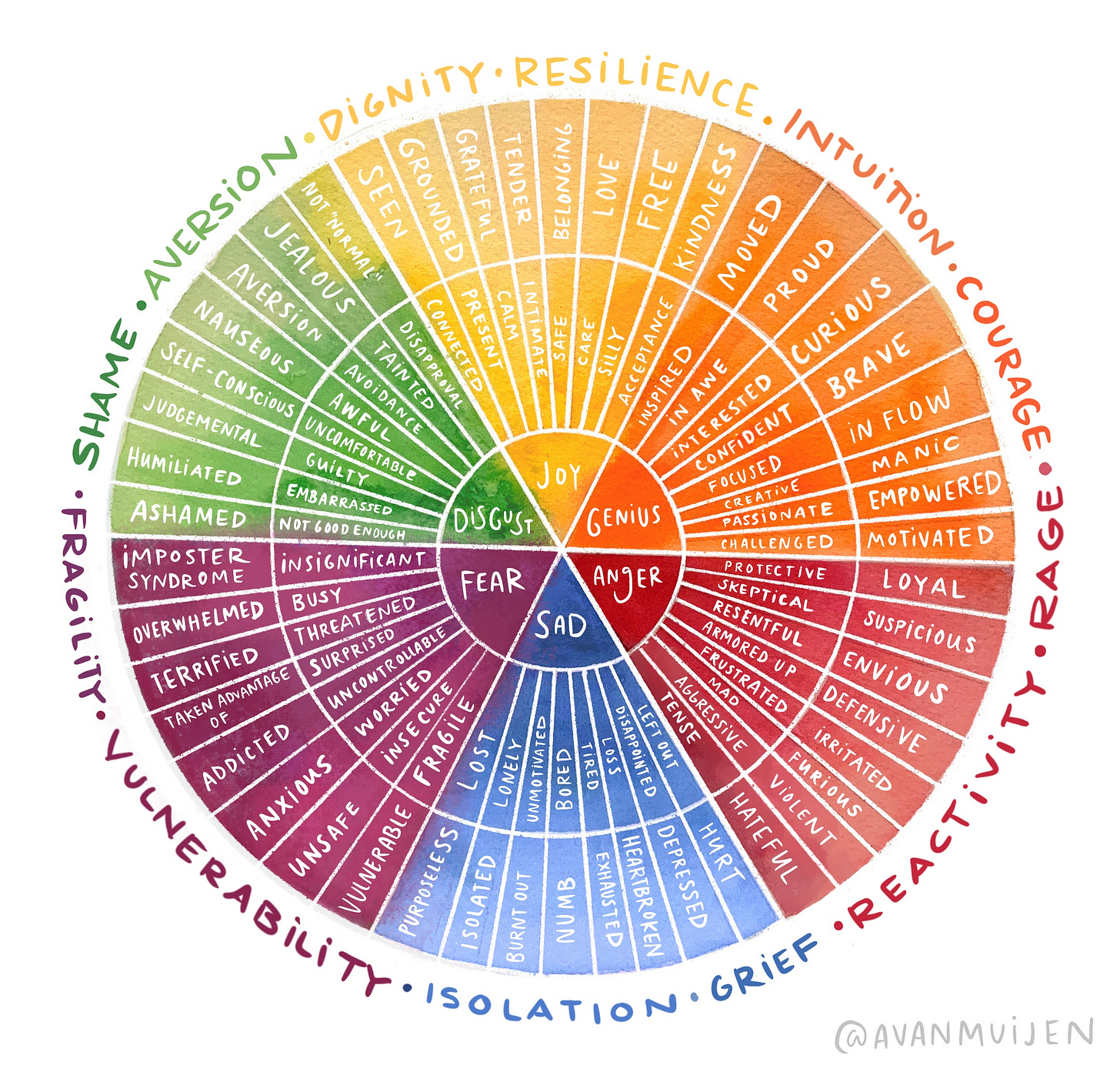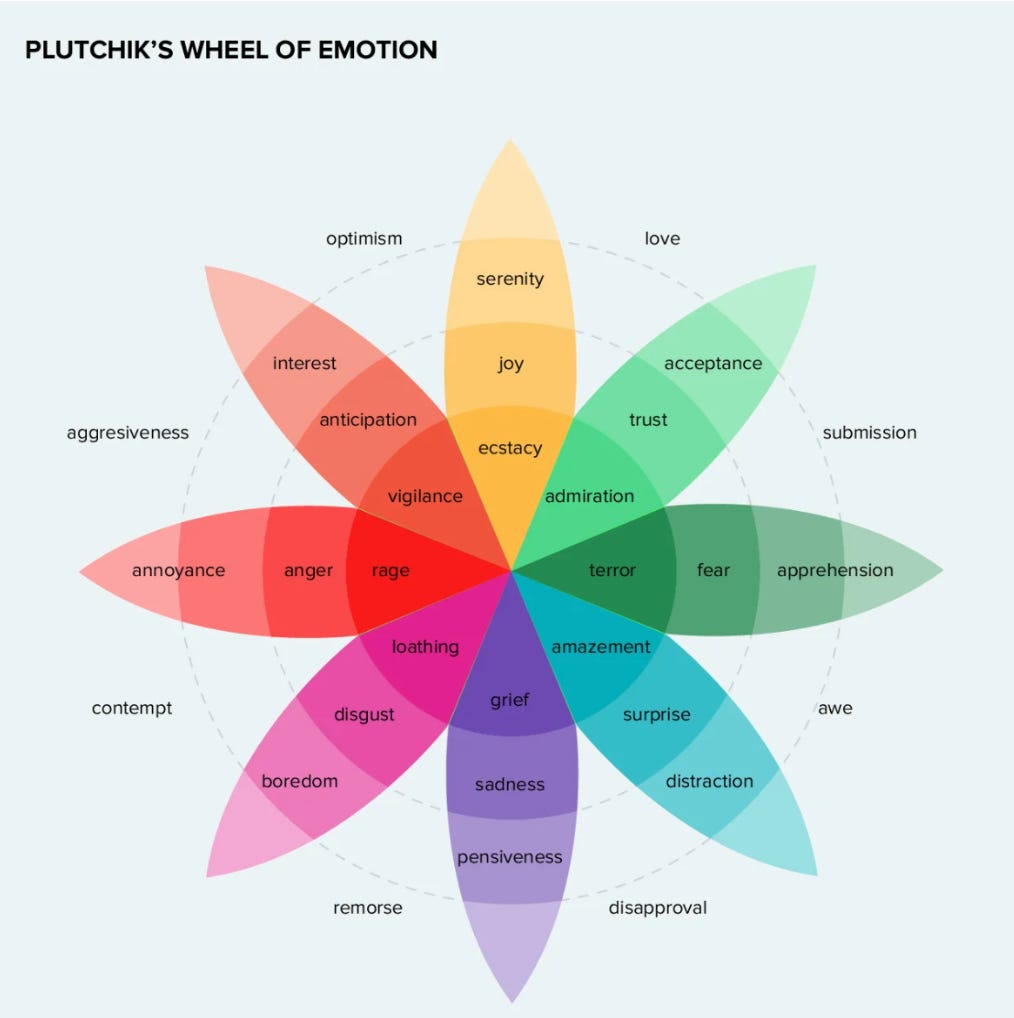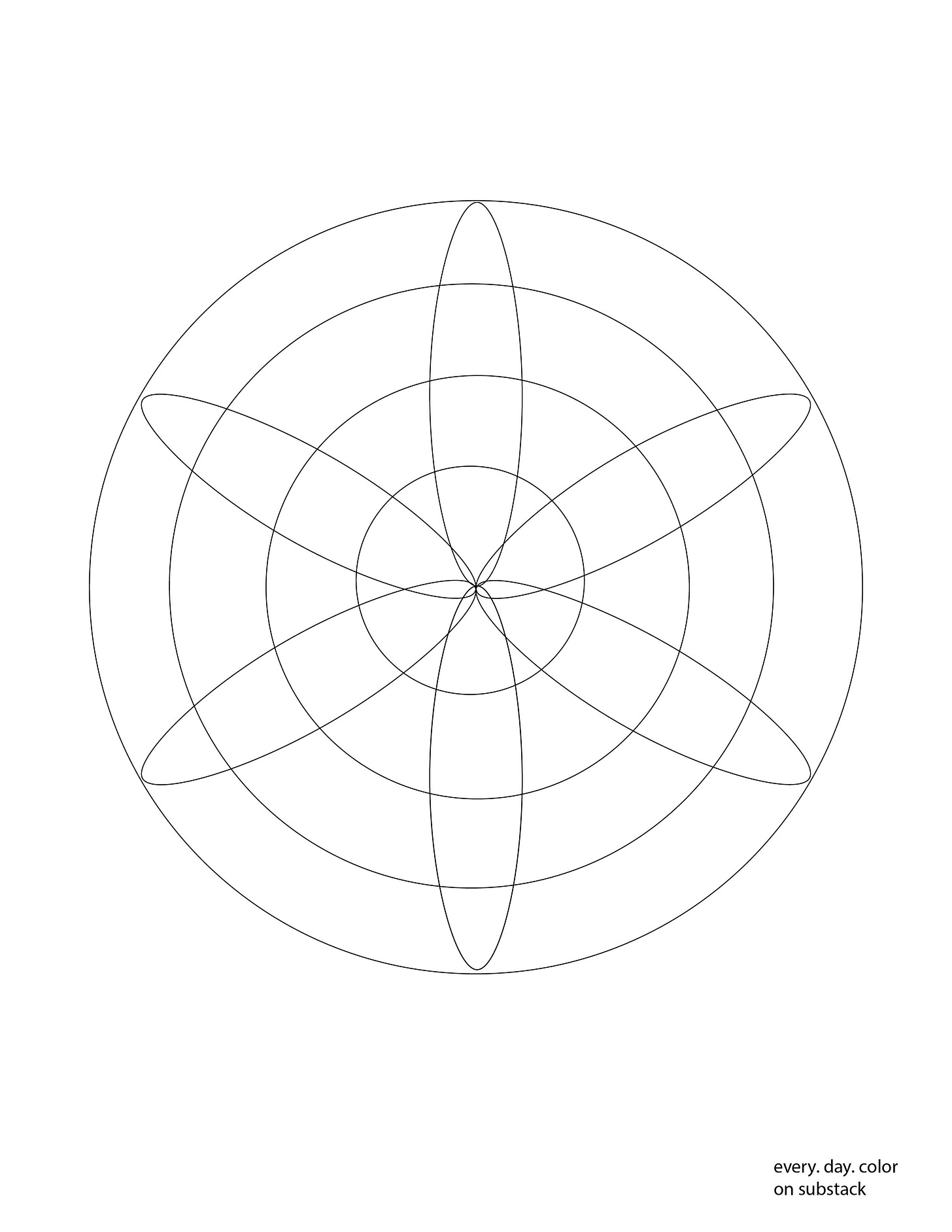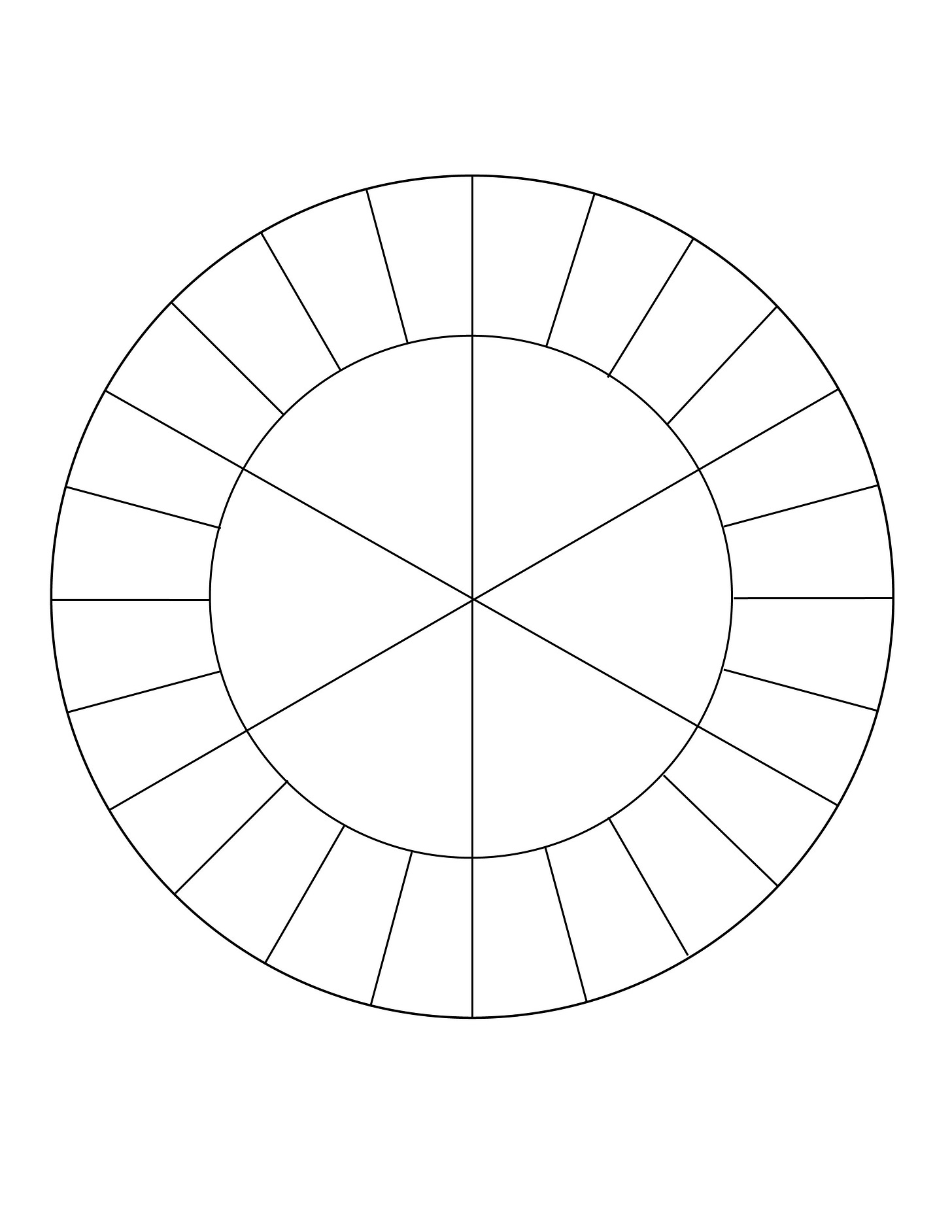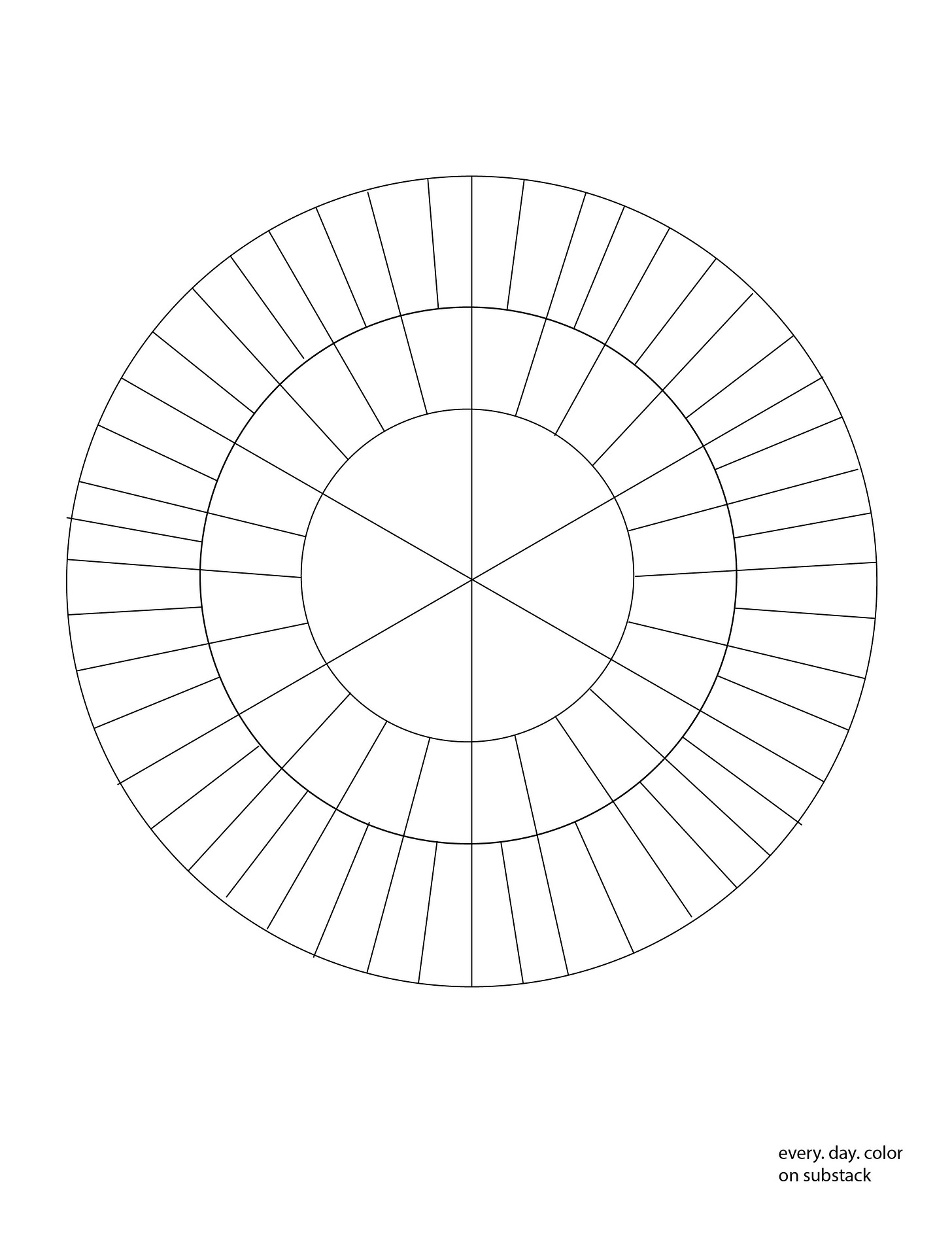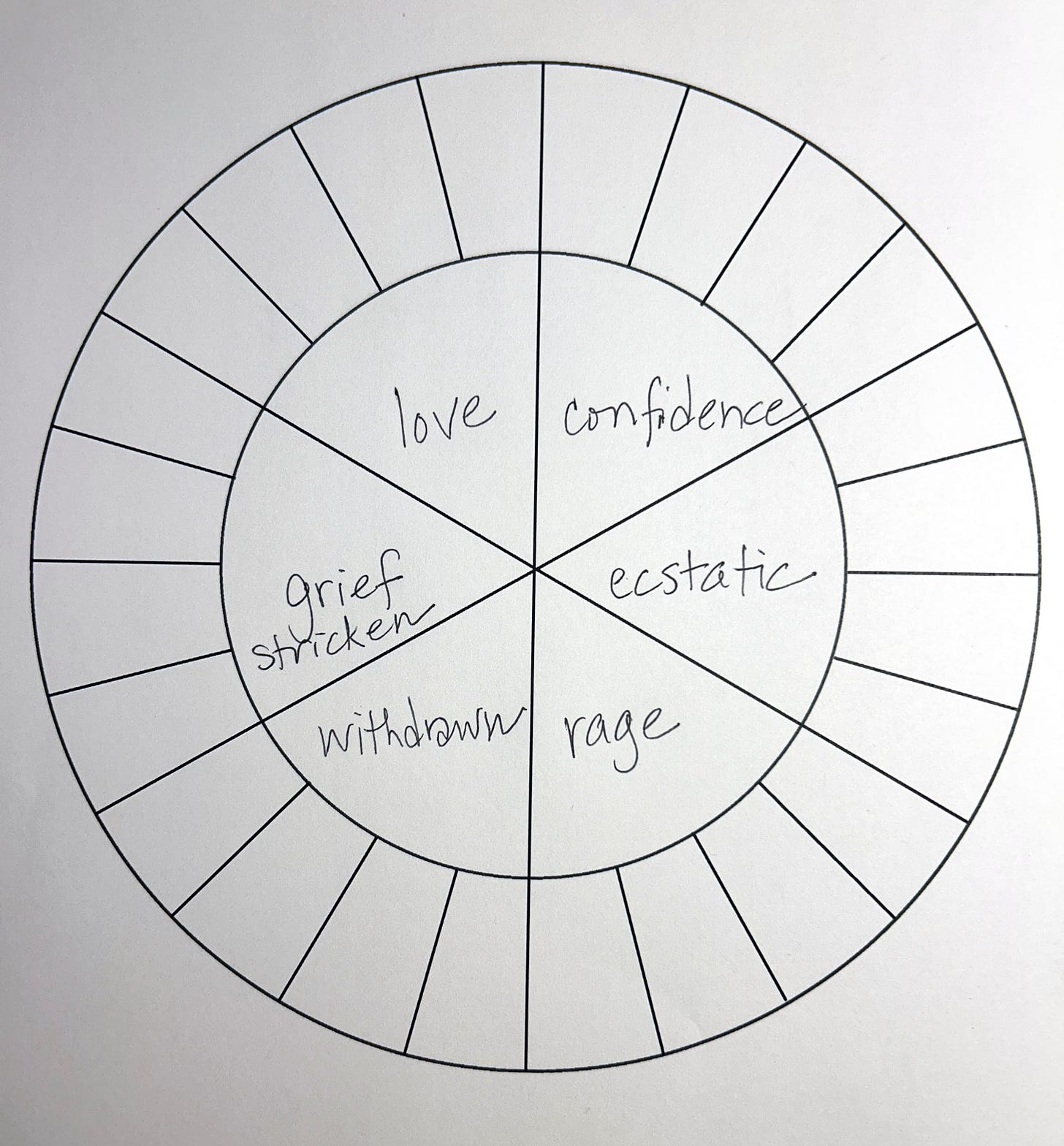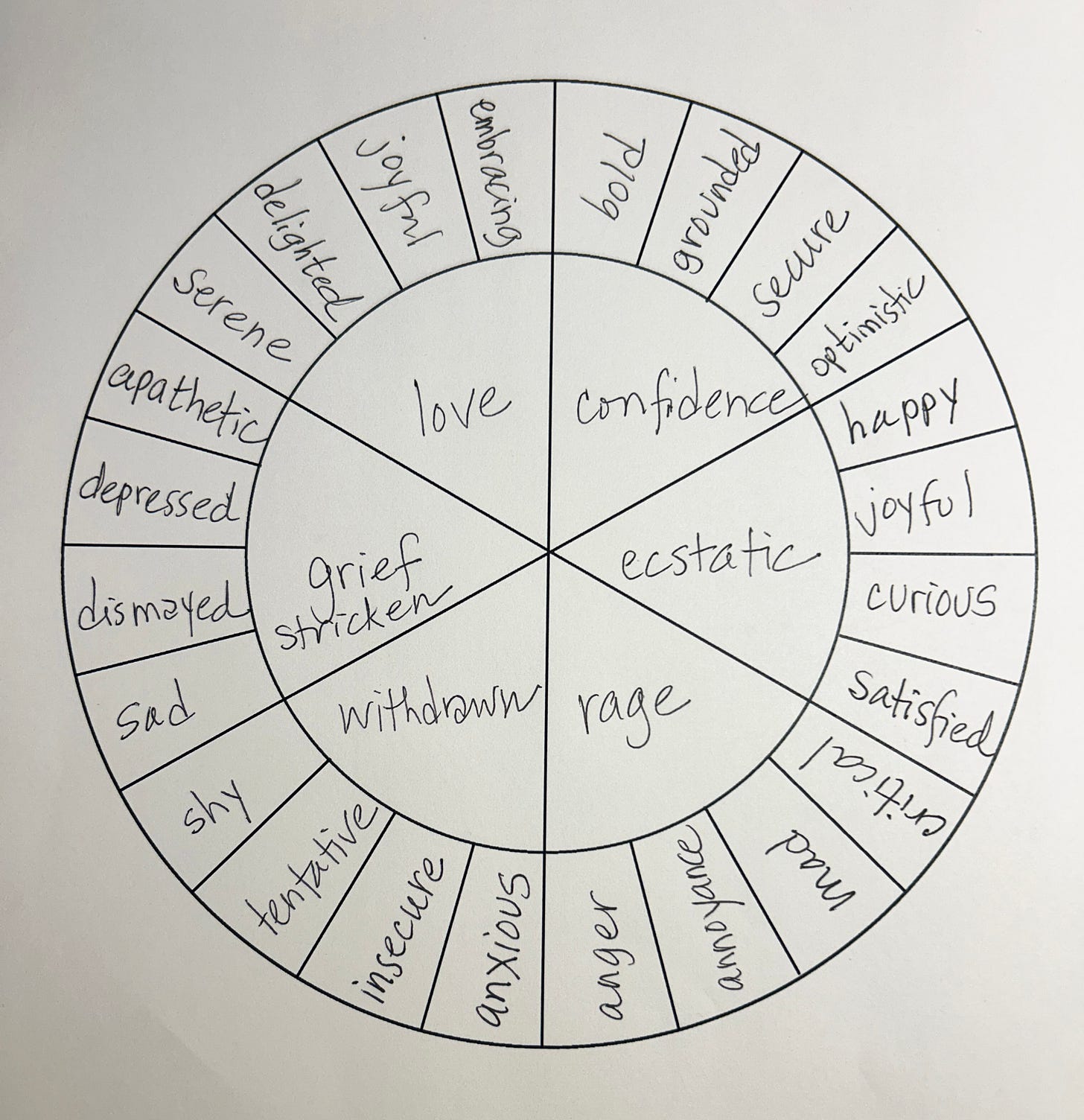We’ve been keeping a color diary and sharing some images of them over in the every. day. color chat. You can find the chat here.
Keeping the diary is good fun in itself….but there’s more fun to be had! We’re going to delve into the color diary data and see if we can create a personalized emotional color wheel. I’ve found that the color diary and the accompanying analysis needed to create a wheel are great tools in developing and expanding artists’ color voice. (I make my undergrad Color/Design students do these exercises & they’re usually pretty happy about it!)
Here’s an example of an emotional color wheel:
(wheel above created by Abby VanMuijen and used via Creative Commons Attribution-NonCommercial-NoDerivatives 4.0 International License)
Many wheels of emotions use color merely as a graphical device, but Robert Plutchik’s wheel1 (below) was one of the first to assign colors that many people associate with a particular emotion. There probably are a lot of folks for whom green is the color of fear and purple the color of grief. But I suspect there are more of us who have more idiosyncratic associations between a color and an emotion. Hence the value of keeping a color diary, as our community has been doing this past week. The data in our color diaries will let us select and apply individually meaningful colors to a personal color wheel.
Find some opposing emotions
Start the process by looking for emotions that pop up more than once in your color diary pages.
You probably didn’t feel the entire spectrum of emotions during the 7-day diarying process, but I bet there were a few repeats. I noted that anticipation, excitement, confidence, and dread appeared more than once in my diary pages.
Then look for opposing emotions. Opposite emotions will vary from person to person. Note that one emotional color wheel above opposes fear and surprise, and another wheel opposes loathing and admiration.
My own emotion oppositions from my color diary pages are:
calm vs. excited
excitement vs. apathy
confident vs. tentative
love vs. rage
Searching for these opposites can be a big help in starting your emotional color wheel.
Choose a template for your color wheel
The templates I’m linking here vary in the number of emotions they include as well as how much differentiation their structure permits.
The “six petal wheel” is nice and simple. It arranges six emotions in opposing pairs and offers you concentric rings. You could put the strongest emotions close to the center, with weaker varieties of each emotion radiating outwards. Or, the opposite. It’s similar to Plutchik’s wheel pictured above except it has 6 petals instead of 8.
The “two-layered wheel” offers six sections for opposing pairs of emotions. And has an outer ring that divides each of the six primary emotions into 4 variants.
The “three-layered wheel” is for those who are truly adept at identifying and naming emotions. The two outer rings of this wheel provide space for naming and coloring a total of 78 emotions - plenty of room for emotional nuance!
Once you’ve selected the shape, start labeling segments. Here’s where the opposing emotions can help. Below, I’ve started my wheel by opposing love and rage, then continued with two other of my opposites: confidence vs. withdrawal and ecstasy vs. grief. I chose these particular 6 emotions because they appeared often in my color diary.
I’ve put 4 variants of “love” in the outer ring; 4 variants of confidence, etc. All 24 of the emotions in my outer ring of the wheel are weaker forms of the primary emotion, but I’m not sure if they’ll simply get a weaker version of the primary color, or something else.
Tomorrow, we’ll get to the fun part: adding color to the wheel. If you’d like to be part of the chat and maybe share your results, be sure to subscribe to every. day. color and join the chat.
I hope you're enjoying this ad-free, AI-free, anti-algorithm post. I'll be creating new posts bi-weekly.
I envision this space as a place to investigate color in the every day and to build a community of like-minded folks.
If you'd like to receive these posts directly in your email inbox, just subscribe below. Every other Sunday, you'll receive a post from me.
Plutchik, Robert. Emotion: A Psychoevolutionary Synthesis. New York: Harper & Row, 1980.



